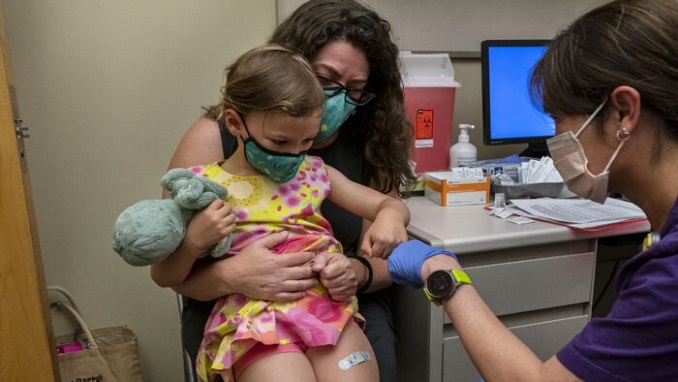
After it was notified in November of a possible increase in strep A infections cases among children in a Colorado hospital, The Centers for Disease Control and Prevention (CDC) alerted the medical community on Thursday to an increase in pediatric cases of the invasive infections.
The CDC issued a health advisory warning clinicians and public health authorities about the increased number of pediatric infections with invasive strep A – a bacteria that can cause a range of illnesses, from so-called strep throat and infections to the skin and soft tissue to uncommon, but severe diseases like sepsis and necrotizing fasciitis.
The Texas Children’s Hospital in Houston, which is the largest pediatric facility in the US, has recorded around 60 cases of invasive strep A infections among kids, which is more than four times more compared to the same period last year.
Some people may also develop skin conditions – scarlet fever, impetigo, or cellulitis – or, in rare cases, streptococcal toxic shock syndrome that can lead to organ failure.
Per the CDC announcement, these severe and invasive diseases are associated with high mortality rates and require immediate treatment – including appropriate antibiotic therapy”.
The advisory informs of an increased number of infections in places that have also registered increased cases of respiratory syncytial virus (RSV), influenza viruses, SARS-CoV-2, and other respiratory viruses.
The raise in cases of invasive strep A infections – although overall remaining low and rare in children – noted in the Infectious Diseases Society of America’s provider-based Emerging Infections Network enticed the CDC to investigate and issue the health advisory.
Children who develop severe group A strep infections will often start out with a viral respiratory infection, according to Dr. Sam Dominguez, an infectious disease specialist at Children’s Hospital Colorado and a professor at the University of Colorado School of Medicine.
The sudden uptick in cases among children it’s still unclear since although even healthy adults can get invasive strep A, most susceptible to the disease, per the CDC, are people with chronic illnesses and those over 65, American Indian and Alaska Native populations, long-term care facilities residents, as well as people with serious medical conditions such as diabetes, malignancy, immunosuppression, chronic kidney, cardiac, or respiratory disease.




Be the first to comment